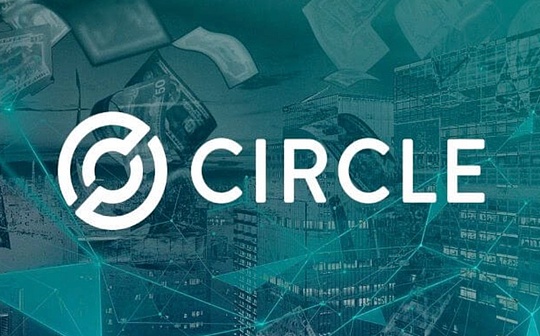
Jessy, bitchain vision
In its second quarter financial report for 2025, Circle disclosed that it will launch a public chain ARC dedicated to stablecoins.It’s not just Circle. Previously, it was reported that payment giant Stripe has cooperated with venture capital agency Paradigm to develop a payment public chain code-named Tempo.
With Circle and Stripe leading, will self-built public chains become a trend?And what threat will this pose to the “global settlement layer” narrative of existing public chains such as Ethereum?
Giant entry, dedicated chain
Circle announced its major product plan in its second quarter 2025 financial report – it will launch a Layer-1 called ARC later this year, built specifically for stablecoin finance.The chain will be fully compatible with Ethereum virtual machine (EVM), set USDC as a native gas token. According to its disclosure, the public chain ARC will have sub-second settlement confirmation and support the “optional privacy” function, which is suitable for financial compliance needs.
For Circle, the most core reason behind building its own public chain is the continuous expansion of its stablecoin business. Its Q2 data in fiscal year 2025 showed that USDC circulation increased by 90% year-on-year to US$61.3 billion, and increased to US$65 billion as of August 10.The USDC balance on the platform soared by 924% year-on-year to US$6 billion, and the number of user wallets increased by 68%, reaching 5.7 million.
At a time when the stablecoin business is soaring, reducing costs has become the top priority. Circle Q2 financial report shows that its distribution costs increased by 64% year-on-year to US$407 million, which undoubtedly squeezed profit margins.Arc will directly use USDC as Gas and integrate it into Circle’s own ecosystem, which is expected to reduce the reliance on distribution costs of partners such as Coinbase, thereby reclaiming profit margins.
Arc provides sub-second settlement, which is performance optimization around payment scenarios rather than purely decentralized.At present, Circle has applied to establish a national trust bank and strive to access the Federal Reserve’s main account and payment system, which will significantly reduce liquidation costs and improve funding efficiency.Arc’s optional privacy and regulatory interfaces are also tailored for institutional scenarios such as cross-border payments and securities settlements.
On the other hand, for payment companies, the settlement layer is the lifeblood.Relying on a third-party public chain means that the core infrastructure is controlled by others.Gas fee volatility and uncertainty in network upgrades can both affect payment experience and profit margins.Self-built chain means that the cost model and upgrade rhythm are controllable.Moreover, the core demand of the payment business is low latency, high throughput, and predictable confirmation time.
Specialized chains are dedicated. For leaders such as Circle, having their own public chain is something they will do sooner or later. Now building a public chain is driven by the passage of the US GENIUS Act and the continuous expansion of the USDC market.
For Ethereum, is the self-built chain trend a threat or an opportunity?
Not only Circle is building its own public chain, payment giant Stripe has also cooperated with venture capital agency Paradigm to develop a payment public chain called Tempo.Tempo plans to be compatible with EVM, focusing on high-performance, low-latency settlement, and is positioned in global merchant payment and cross-border clearing scenarios.
And at present, this is not just the strategy of individual companies. After Circle and Stripe, PayPal, Shopify, Adyen and even large banks may launch plans to build their own chains, and each giant wants to take control of their own payment sovereignty.
And what impact will this have on the existing public chain ecosystem?Especially in this cycle, will Ethereum, which has just changed into the narrative guise of global RWA and stablecoin settlement layers, pose a threat?
In the short term, the direct competition between these giants’ self-built chains and Ethereum, Solana, BNB Chain, etc. is not fierce, because their design goals are highly vertical – performance first and compliance first, rather than pursuing the maximum decentralized or diversified DeFi application ecosystem.But in the long run, threats certainly exist.
Currently, a large amount of USDC transaction volume occurs in Ethereum and its second layer.If USDC runs natively on Arc and integrates into various payment applications through APIs, it may shift on-chain stablecoin settlement from “open multi-chain” to “vertical closed loop”, Ethereum’s stablecoin settlement volume and DeFi ecological liquidity will be partially removed.
Similarly, when Stripe or PayPal directly embeds on-chain payment functions into the merchant settlement system, developers may prefer to build applications around these proprietary chains rather than adapting to compliant payment scenarios for public chains like Ethereum.
For investors, the more obvious impact may be that Ethereum’s imagination space is compressed, and the giants’ RWA and stablecoins settlement layers are implemented first, which may affect the capital market’s pricing expectations for Ethereum.
Of course, opportunities also exist – most of the self-built chains of giants will maintain EVM compatibility and provide cross-chain bridges or settlement channels to the outside world. Ethereum may still become their clearing backup layer and value collection center. In this way, it may be a powerful reinforcement of Ethereum’s new narrative.







